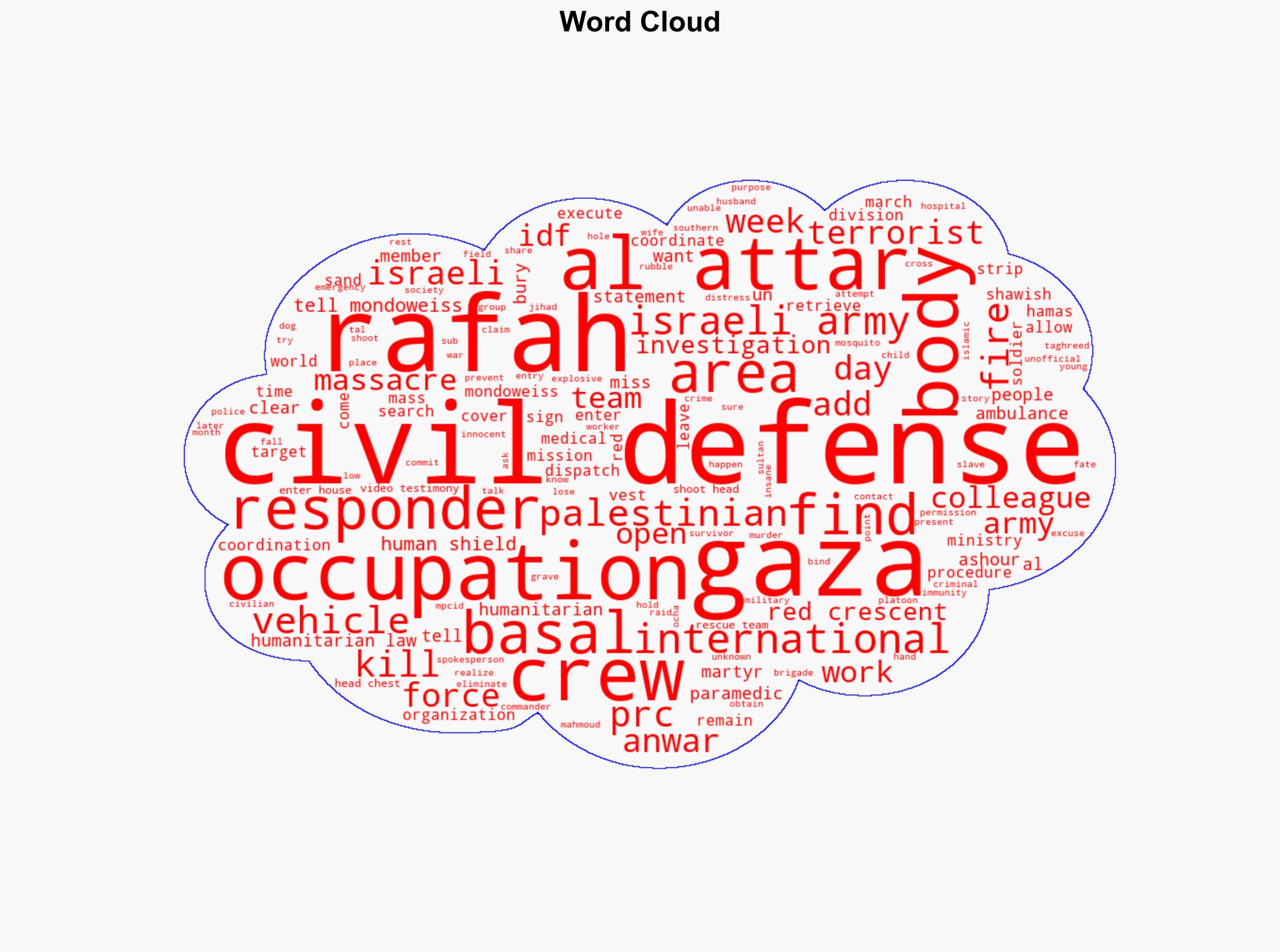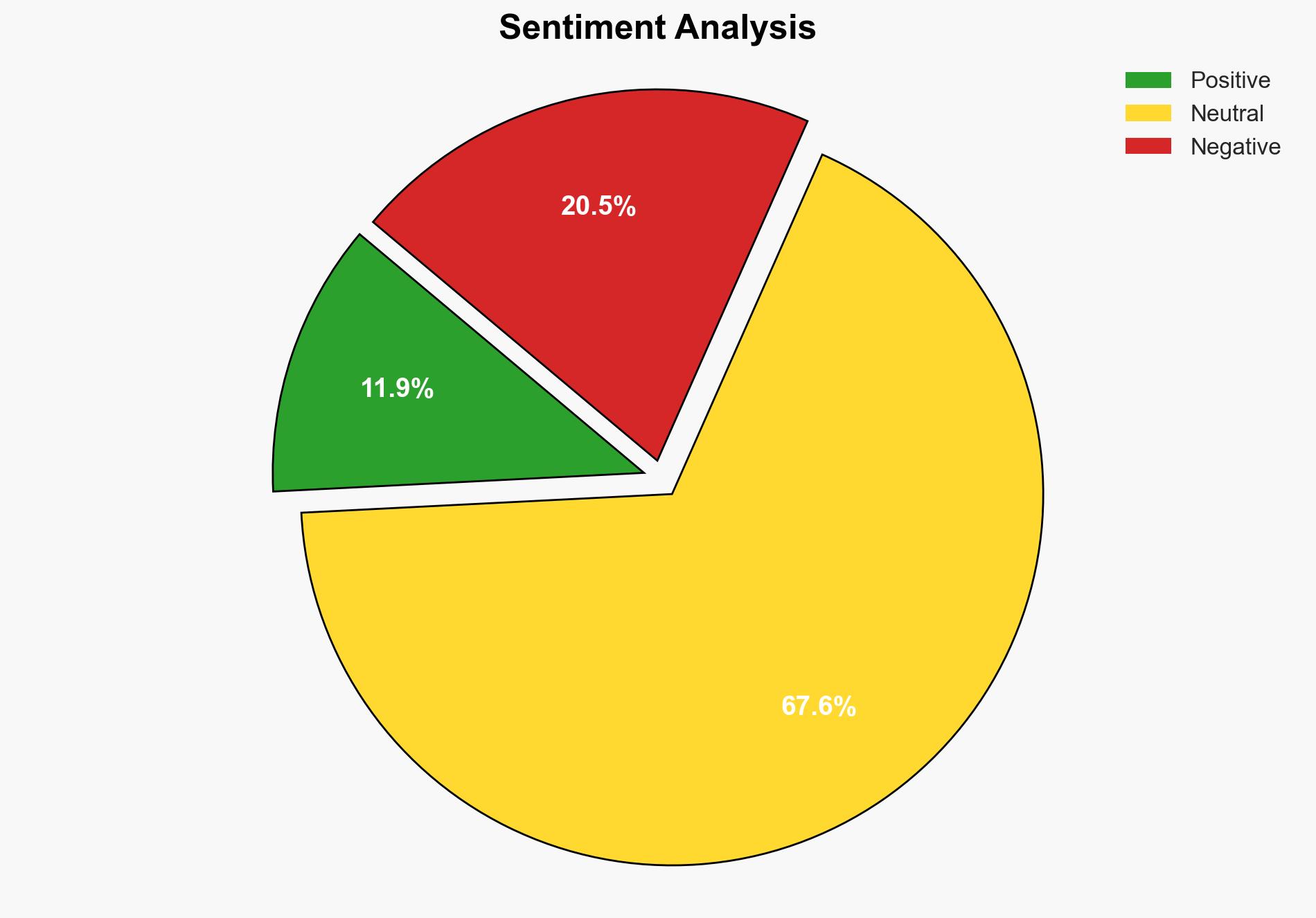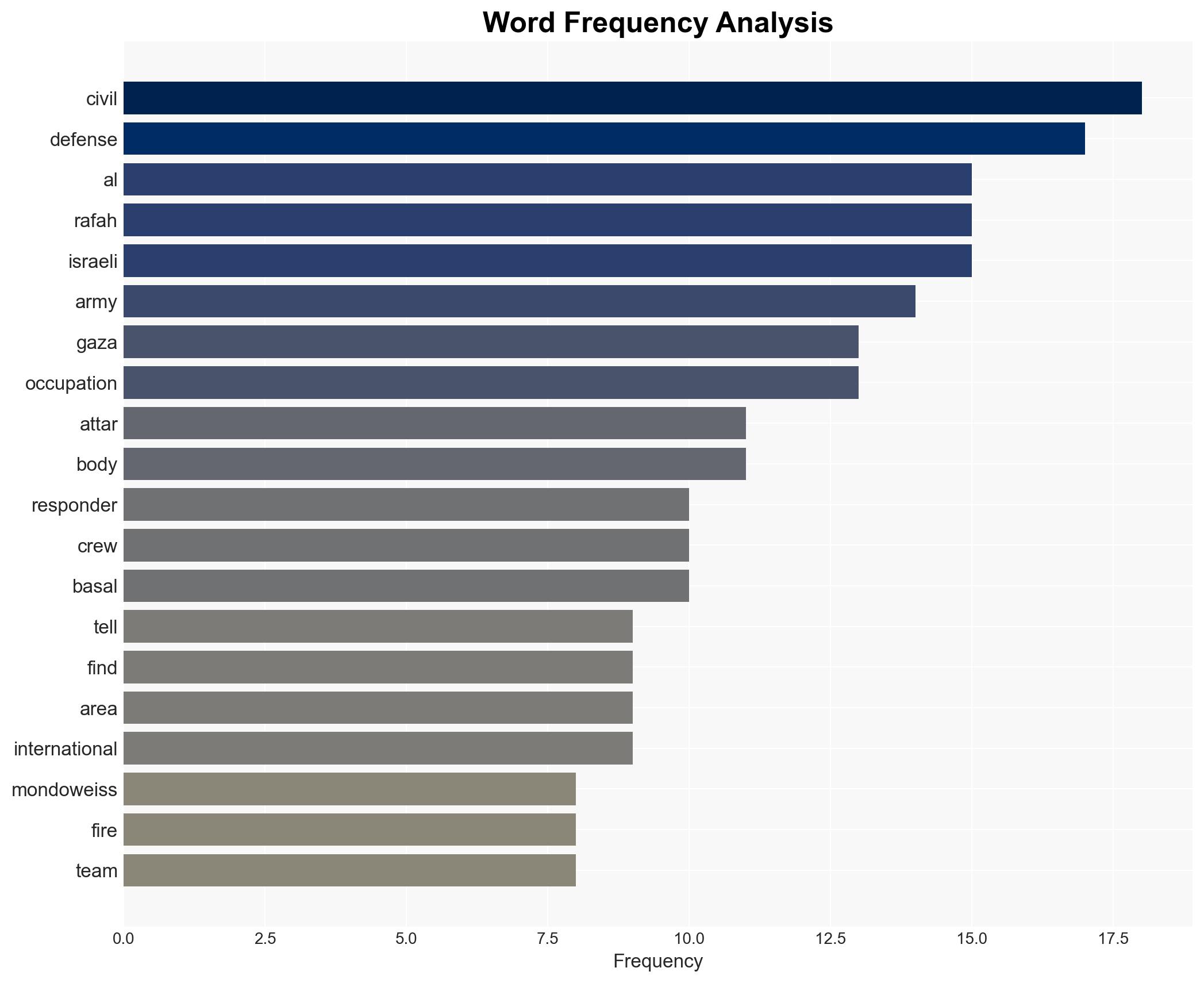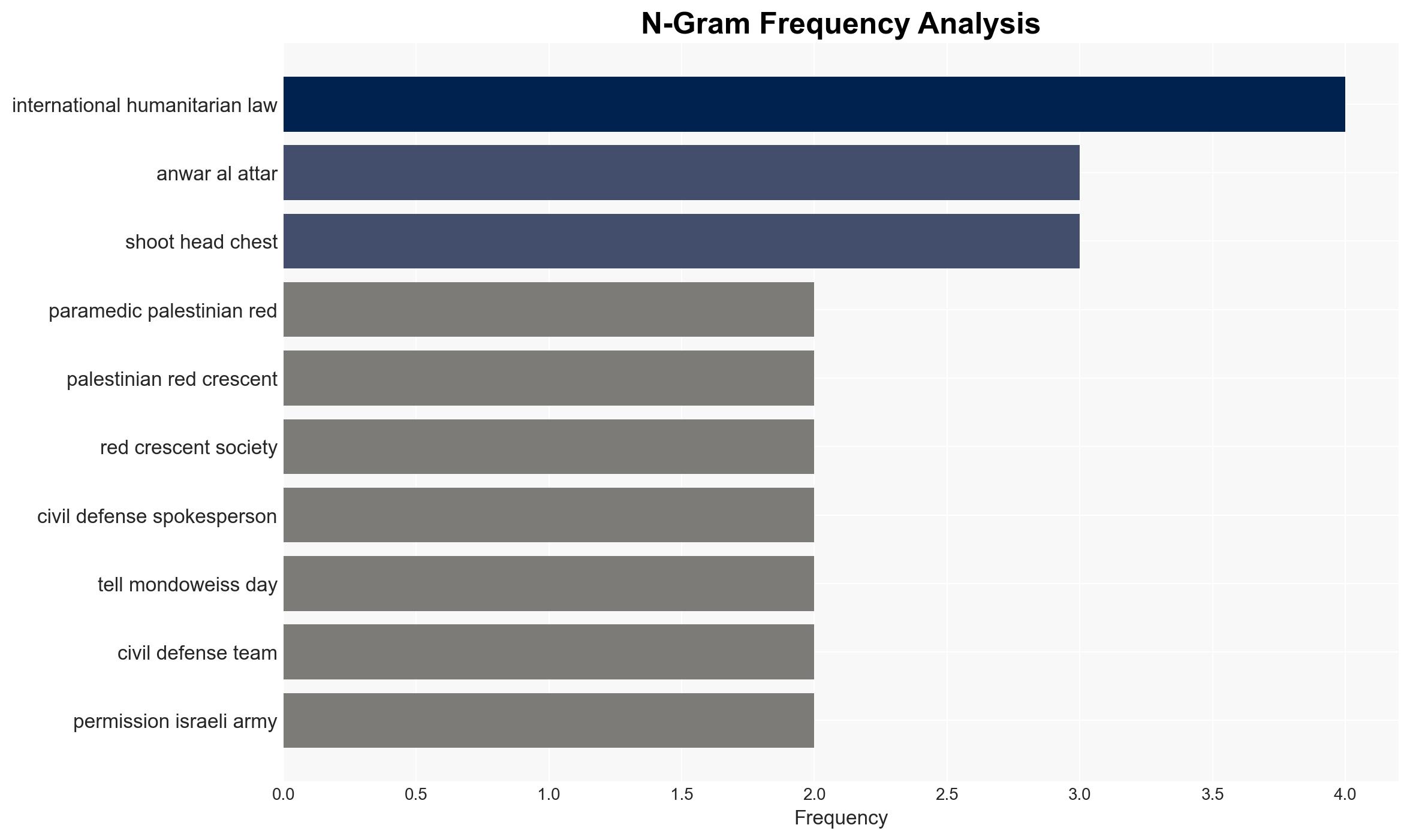The first responders massacre 14 aid workers found dead and buried hands bound – Mondoweiss
Published on: 2025-03-31
Intelligence Report: The first responders massacre 14 aid workers found dead and buried hands bound – Mondoweiss
1. BLUF (Bottom Line Up Front)
Fourteen aid workers, including members of the Palestinian Red Crescent Society and civil defense teams, were found dead with their hands bound in Rafah. Evidence suggests deliberate targeting by the Israeli army, raising significant concerns about the safety of humanitarian workers and potential violations of international law. Immediate diplomatic engagement and investigation are recommended to address the humanitarian crisis and prevent further escalation.
2. Detailed Analysis
The following structured analytic techniques have been applied for this analysis:
General Analysis
The incident involved the targeting of first responders during a period of heightened military activity in the Gaza Strip, particularly in Rafah. The bodies of the aid workers were discovered with signs of execution, including gunshot wounds to the head and chest. The Israeli army’s actions, including the imposition of a blockade and restrictions on humanitarian access, have exacerbated the situation. Testimonies from survivors and local sources indicate a pattern of targeting civilian and humanitarian personnel, which could constitute a breach of international humanitarian law.
3. Implications and Strategic Risks
The incident poses significant risks to regional stability and international relations. The targeting of aid workers undermines humanitarian efforts and could lead to increased tensions between Israel and Palestine, as well as with the international community. The potential for retaliatory actions and further violence is high, which could destabilize the region and impact global economic interests, particularly in energy markets.
4. Recommendations and Outlook
Recommendations:
- Initiate an independent international investigation into the incident to determine accountability and prevent future occurrences.
- Enhance diplomatic efforts to mediate between conflicting parties and ensure the protection of humanitarian workers.
- Implement technological solutions to improve the safety and tracking of aid workers in conflict zones.
Outlook:
In the best-case scenario, diplomatic interventions lead to a ceasefire and improved access for humanitarian aid. The worst-case scenario involves further escalation of violence, leading to a broader regional conflict. The most likely outcome is continued tension with intermittent violence, requiring sustained international engagement to manage the crisis.
5. Key Individuals and Entities
The report mentions several individuals, including Nasser, Taghreed Al Attar, Anwar Al Attar, Abdul Rahman Ashour, Marwan Al Hams, and Mahmoud Basal. These individuals are connected to the events in Rafah and have provided testimonies or been directly involved in the incident. The organizations involved include the Palestinian Red Crescent Society and civil defense teams.





